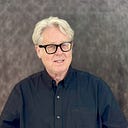Top three pricing mistakes: Using guesses or gut-feel to price
(Article 3 of 3)

Over the years, I have seen so many companies make mistakes with pricing. These are mistakes that can easily be avoided just by knowing they are actual mistakes. These pricing mistakes lead to sub-optimal performance: lower sales volume or lower profit margins compared with the right way to price. Sometimes both.
This three-part article series will cover the most common mistakes; price to competition, using cost to price and using guesses to price.
3. Using guesses or gut-feel to set the right price.
To say that some companies use a wild guess to price their products or services is a slight exaggeration. Most people have some intuitive sense of what the price should be. They know this from comparing their prices to those of other product or service offerings in the same or adjacent industries. They set their prices based on their own purchasing experience and from the value they themselves see in the product or service. So, in reality, guessing the price is some kind of informed guess, but it is still a guess. Companies call this “guessing” different names:
- Some say they use the “market price.” Well, unless what is sold has prices published on commodity exchanges, there really is no way to know “the market price.” Other companies that say they use the “market price” simply send out their salespeople to negotiate the best deal. This is rarely a good idea, as salespeople tend to sell at the lowest price they can get away with, which leaves lots of money on the table.
- Other companies may say “we know what our customers are willing to pay.” This could be because the company or the person setting prices is so sure about his or her guess or gut feeling that they would never welcome a discussion on the topic. Because they “know.” Or, it could be because they have actually asked their customers. But there is a problem with this too. Who would believe the answer given by a customer, if a seller asks a customer what they are willing to pay for a product or service? The buyer for sure will lowball the number, for the simple reason they want a lower price, a better deal the next time they buy from the same company.
- Yet other companies will say “we use our market knowledge and gut feeling” to set the price. This is at least an honest statement. And that is a good thing because those who realize they use an imprecise method to set prices will be open to considering other, better, methods to set their prices.
So, what is the problem with setting price based on guesses?
Companies that set prices based on guesses fall into three categories:
- The first category includes those who were so wrong in their guesses that they did not sell, or did not sell enough, or did not generate any profits or enough profits. These companies failed. Literally, went out of business.
- The second category includes companies that set prices that are “right enough” so they stay in business, but “wrong enough” so they will forever struggle in a competitive market. It may be that the price is too high and their sales volume is very low, or that the price is too low and they do not make enough margin, or if the price is way too low they will also suffer from insufficient sales volume — as a too low price becomes a message of poor quality and benefit.
- The third category includes companies whose pricing guesses get them almost right. These companies may do well or at least as well as their competition. But they are still leaving money on the table, or they are not getting the sales volume they could. Or both.
Companies that use guesses to set the price do so either because of the individual who sets the price, or the team that sets the price, believe their guesses, their gut feeling, their assumptions or their hunches will be correct. Or, it may simply be that they do not know better. Companies must know there are better ways to set the price!
Don’t forget to look out for additional articles I write on the topic of pricing!
Per Sjöfors
The Price Whisperer™
Founder
Sjöfors & Partners Inc
www.sjofors.com
Pricing has always been an interest area for Per. As a serial entrepreneur, running companies in Europe and the US, he did pricing experiences. Some of these worked spectacularly well, some did not work at all. As a result, Per founded Atenga (now Sjöfors & Partners) out of his frustration that what business schools teach about pricing is too abstract, too academic for a business executive to act on. Likewise with books about pricing. Consequently, he set out to make pricing practical and actionable. Pricing for business people. Since then, he has been at the forefront as thought leader in everything pricing and he is a sought-after speaker for a variety of conferences and business circuits.
Per appear regularly on business radio shows and gets quoted regularly in the financial press, including Forbes, Fortune Magazine, Inc., IndustryWeek, Business Insider and the Financial Times.
About Us: Sjöfors & Partners has developed a unique method for data-driven pricing based on price-specific market research, that generate precise measurements of customers’ willingness to pay or buy for a product or service. Armed with this knowledge, companies can focus their sales, marketing and product development efforts towards the market segment with the highest willingness to buy at the highest prices. The measurement also allows Sjöfors & Partners’ clients to accurately predict the results of different prices, taking the uncertainty out of pricing decisions.
